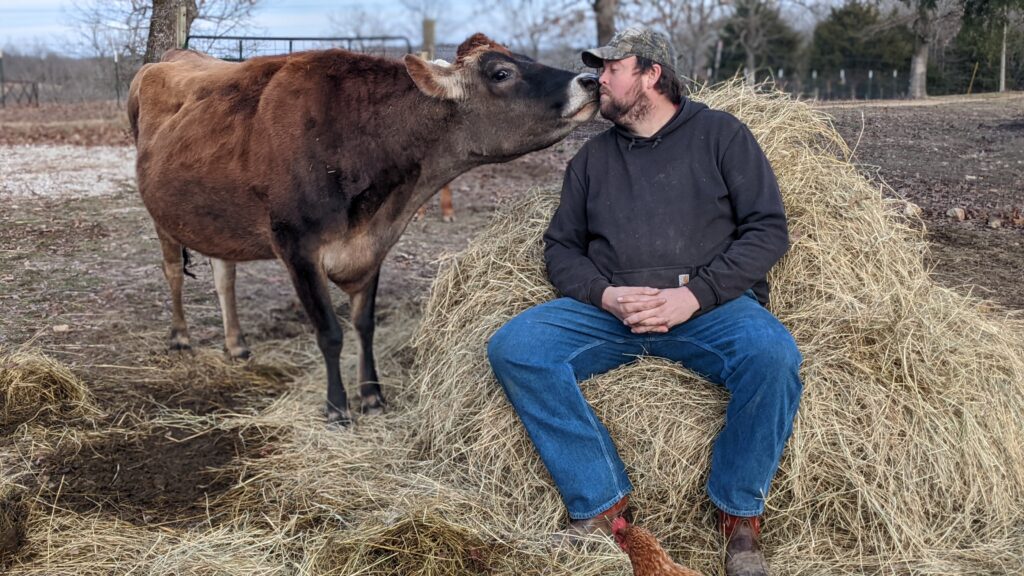
We get so excited to do the shopping part, but the research part is much more important. You know how you read the reviews before making a purchase? You can’t exactly do that with a dairy cow, but here are some great things to arm yourself with before you make the leap and help you to make the right choice from the beginning. We’ve watched many farmers purchase cows (or animals in general) only to realize they didn’t do any research and it’s not at all what they want. Not only can this be incredibly costly to a small farmer, but while our animals are tools around our homestead, they also become bonded to your herds and flocks and to people. While I agree that animals will come and go, I will always advocate for an animal not being shuffle from farm to farm because humans choose not to do research and go in with as much knowledge as possible.
Here are some things to take into account as you are shopping for a dairy cow.
How will you feed your cow?
This is an important one and it’s usually over looked. It’s not as simple as I have a field and they can eat what’s in it.
Hay? Pasture? A combination?
How many cows can your pasture support and do you have forage for the entire year? Chances are you don’t have 40 acres for your 5 small to mid sized cows. If you do, you can probably run your cows on pasture for the majority of the year even if the pasture is pretty terrible. There will still likely be a few months that you have to supplement because you probably don’t have winter grasses in poorly managed pastures.
Between the range in climate and the previous pasture management (or lack of) most pasture will not lend itself to year round grass for your animals. There may be forage there, but it’s likely not great for their health or palatable to your animals. Many of us start with the idea that we will simply put our animals out there and require them to eat what’s available. Even when you have researched rotationally grazing you have a vague understanding that the pasture will improve as you move the animals and they deposit their organic matter (urine and excrement) and stir up the seed bed, but we forget that we have to deposit organic matter to get that to happen. In an ideal world we could simply make something from nothing, but that’s just not the case and doesn’t lend itself to the healthiest animals. Your animals MUST eat a balanced diet to stay healthy and to produce milk for her calf and your farm!
If you are feeding hay then you need to secure that hay. By that I mean you need to find a farmer with hay that meets your qualifications. Is it nutrient dense? We fully advocate for avoiding chemical fertilizers, but you need to be aware that if that land doesn’t have nutrients put back into it and it’s only being removed (harvested) you are missing out on minerals and nutrients that your animals desperately need. Do you have a place to store square bales or will you be using round bales? Round bales are able to be stored outside and the outer portion stripped off upon feeding, but they weigh between 800 and 1200 pounds typically. Do you have a weigh to load or unload those? Can you move them or stack them in an area on your farm? We don’t have a tractor and we have a fantastic neighbor that helps us unload and move our bales to the appropriate pastures where we can roll them or drag them with the gator. See our YouTube video on how we move our bales here.
Most people are feeding at least some hay and it’s better to be prepared and not need it than be scrounging because your animals have nothing to eat.

Are you grass feeding or adding grain to your cow’s diet?
With the exception of calves receiving cow milk which develops the rumen, grass-fed is by far the best for the cow’s gut health. Cows are ruminants and have 4 stomach compartments and they essentially ferment the grasses they eat to give their body the nutrients in needs. More often then not they are given grains to add weight in beef breeds or increase milk production in dairy breeds. While cows will naturally forage on legumes and the grasses from grains the seed is not where their nutrition should come from and it upsets the natural gut bacteria and ability to digest the grasses. The healthiest animal means the healthiest animal product for you to consume. You can find more information from Weston A. Price on this.
A grained cow is not necessarily a deal breaker. There is a bit of time and research that goes into rebuilding a cow’s gut and weaning them off grain, but it’s absolutely doing. In fact, our first cow was grained and we transitioned her to all grass. It took a good solid 6 months to transition her and get her body condition to where it should be and she’s beautiful! A side note on transition a cow from grain. Many people don’t realize that in transitions a cow’s feed you can send a cow into ketosis and potential kill the cow. Ketosis is a metabolic disorder that occurs in cattle when energy demands exceed energy intake and result in a negative energy balance. While this is more common at the beginning of a lactation this can happen at any time when there is a deficit of energy. They get an idea that it’s related to the change in grass and that a cow simply can’t be sustained that way. While there is an occasional cow that does very poorly on grass because the genetics have been bred out of them, most cattle can be safely transitioned back to grass-fed in time.
What tools can you use to help manage a cow’s condition without grains?
Black Oil Sunflower Seeds (BOSS) is a great supplemental protein and often result in more cream in the milk from dairy cows. BOSS is high in natural Vitamin E to create a shiny coat and may help stave off mastitis.
Legumes (peas) are another option for cattle to increase protein. Cattle find them very palatable and highly digestible, but they are slower to ferment in the rumen.
Alfalfa is high in protein and digestibility in dairy cows and may lead to higher milk production. It’s often used as a “treat” at milking for grass-fed cattle. Keep in mind that a large amount of alfalfa in the US in GMO so always source organic. Alfalfa can be grazed, used as hay, or haylage.
Fermented Alfalfa (haylage) offers the benefits of non fermented alfalfa with the addition of the fermentation bringing more bioavailability of the nutrients and a probiotic to keep the optimum pH balance in the gut.
Will you feed Organic, non-GMO, or GMO?
Especially when adding grains we need to have a chat about organic vs. non-gmo. vs. conventional growing practices. According the USDA.gov more than 90% or corn, soy (95%,) and cotton (94%) crops grown in the US are GE or genetically engineered. This is a huge issue as we don’t have any long term data that GE or GMO crops are safe for animal or human consumption. There’s actually quite a bit of data suggesting the opposite, but that’s a discussion for another day. When crops are conventionally grown or grown with non-gmo seeds, but without the organic labeling they are allowed to be sprayed with many herbicides including glyphosate. Glyphosate effectively kills most plants by inhibiting the plants ability to make proteins it needs to grow. That glyphosate seeps into the soil and the ground water where it was grown and it’s also contained in those crops and you are spreading them across your land by giving them to your animals. Not only are you literally feeding your animals a poison that is used to stop protein production, but you are depositing it into your pastures or land through dropped feed and organic material your animals spread.
We live in a fallen world and scripture tells us that nothing will be restored until the second coming of the Messiah, but that doesn’t discount that we need to be good stewards of what we have presently. I absolutely advocate for working with a small farmer that isn’t certified organic over a big corp, knowledge is power and the chart below shares a lot of information
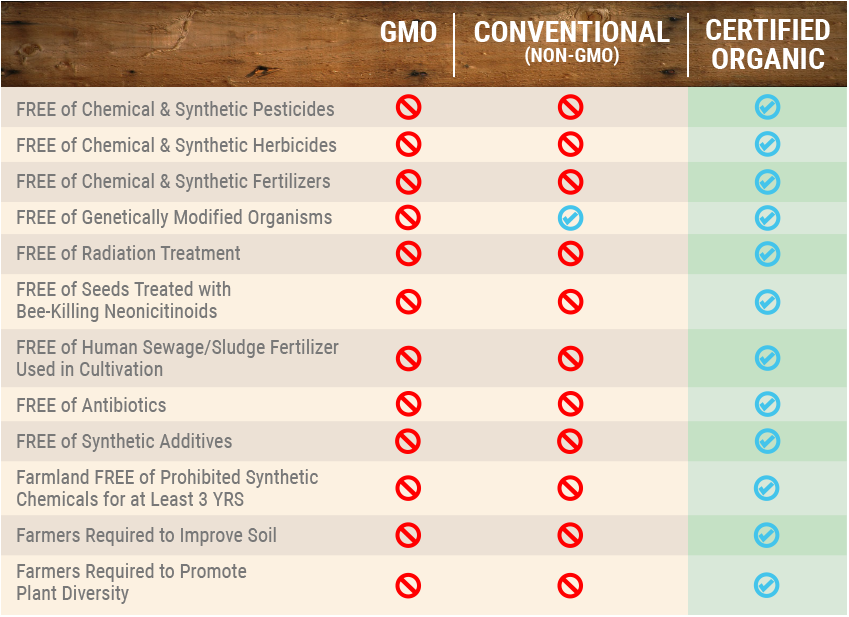
Chart courtesy of New Country Organics
Shelter
I’m going to let you in on a little secret. You likely don’t need a barn. Are they handy to milk in during inclement weather? Certainly. Do I enjoy milking in a small area of my barn when it’s windy in particular? Absolutely. Do I do 95% of my milking in the field? Definitely. A barn isn’t necessary in most climates.
Necessary Shelter
Cows need trees fro wind and shade and that’s about it. You need a cattle breed well suited to your climate and they will be fine. There’s a reason that deer and elk (ruminants) naturally calf in the spring. The weather is more mild and better suited to babies. Maybe we should take a hint from them and follow the natural cycles and we wouldn’t need all these extra structures and things for the animals. Now the comfort of people may be a completely different thing!
Milk Protein
This one often opens a can because people are very passionate about it and I understand.
Cow’s milk protein can be one of 3 variations. A1/A1, A1/A2, or A2A2.
Raw dairy is the only way to consume it IMO and when you insure a healthy cow/herd you are getting those benefits. Many people who don’t tolerate pasteurized dairy are able to consume raw dairy with no issues. An even greater number of people are able to successfully consume raw dairy with A2A2 beta-casein.
From the research that I’ve done I have come to the conclusion that A1 is a genetic mutation in cattle. I can’t give a specific timeline on when the mutation began, but there is a fair amount of speculation on that. The A2A2 protein is not simply the most easily digestible by humans, but also by other animals consuming the milk and there is some research showing severe side effects from the A1 variation of the protein. You can find more information on the hazards of not having strictly A2A2 milk from Weston A Price again right here.
This may or may not be important to you, but I’d hate for you to buy a cow and then immediately sell it because you were simply poorly informed on the best options for dairy cow milk protein variations.
Udder Attachment
Most important here is the high, wide and firm attachment of the rear udder. It should be balanced in proportion to the fore udder attachment. The rear udder should have a slightly rounded appearance and be uniform in width from the top of the attachment to the floor of the udder with even balance of the quarters.
I’m going to link a document from USJersey (American Jersey Cattle Association) resources. Type Traits and Culling: Profile of a Low-Risk Jersey Cow shows great graphics on the different range of attachments. What’s ideal is the farthest most right photo. This is specifically for Jerseys, but other dairy cattle will be very similar.
I’m also linking this blog post from Spirited Rose. We definitely have different ideas on ideal management and we have a much more holistic approach, but they do a fantastic job at breaking down the information from USJersey and there’s a lot to be learned from this particular post. They also has a post about some of the main dairy breeds and their differences if you aren’t sure what breed you are looking for.
Teat Size & Dead Quarters
This is something very important to consider if you are hand milking. Tiny teats can make a long chore and a cranky cow.
Your hand size and milking form choice will be highly influenced by the length of your dairy cows teats. Our first cow had a very short back teat that had to be milked using the form on the left. Her teat had to be held between the thumb and forefinger and pulled pulled down. I have small hands and I simply wasn’t able to get multiple fingers on the teat. It required me to reposition my hand with every stream and in turn it takes longer to milk that quarter out. The image on the right is much easier to do a rolling motion down the teat with your fingers while keeping your thumb fixed.
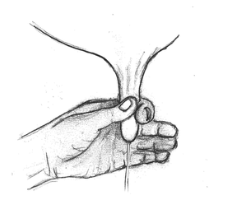
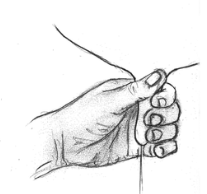
If you find the perfect cow and she doesn’t have all four working quarters don’t let that be a deal breaker. Maybe she’s in the budget. Maybe she has the best personality. Maybe you don’t like goat milk and prefer cow, but don’t need a huge amount of milk. There are many reasons that it may be a great fit for your family so don’t rule her out on that alone.
Personality
This should be discussed more than it is. Cows can warm up to you, but if she’s a jerk theres a good chance that won’t change.
Is she skittish around other animals that are on your homestead?
Do you have children? How is she around children? Is she afraid of them?
She doesn’t need to be an “in your pocket” kind of cow. She does however need to know her job and be good at it. She needs to have respect for you as the head of the herd.
Budget
You need to consider your budget. Not just for the initial purchase, but for hay, supplemental feed, minerals, and “emergency” or medical type care. Are you managing the heard holistically? What do you have on hand available if something arises? Do you have a trailer or a neighbor with one if you needed to transport your cow? How are you getting her to your homestead? These things should all be factored into your budget for your milk cow.
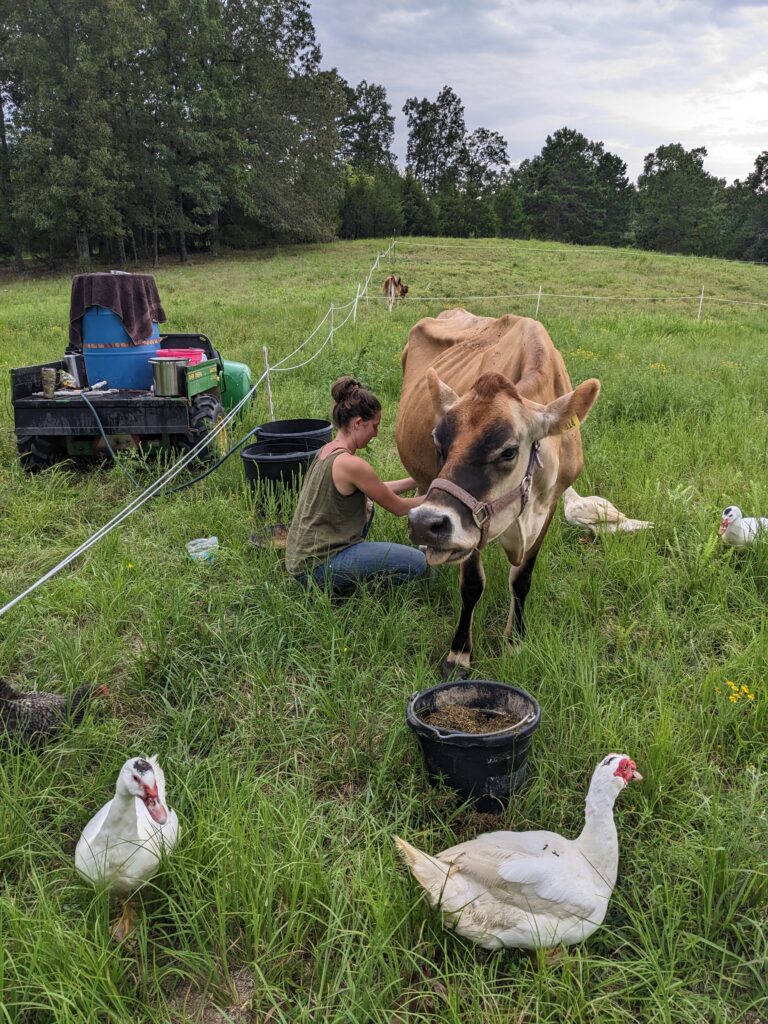
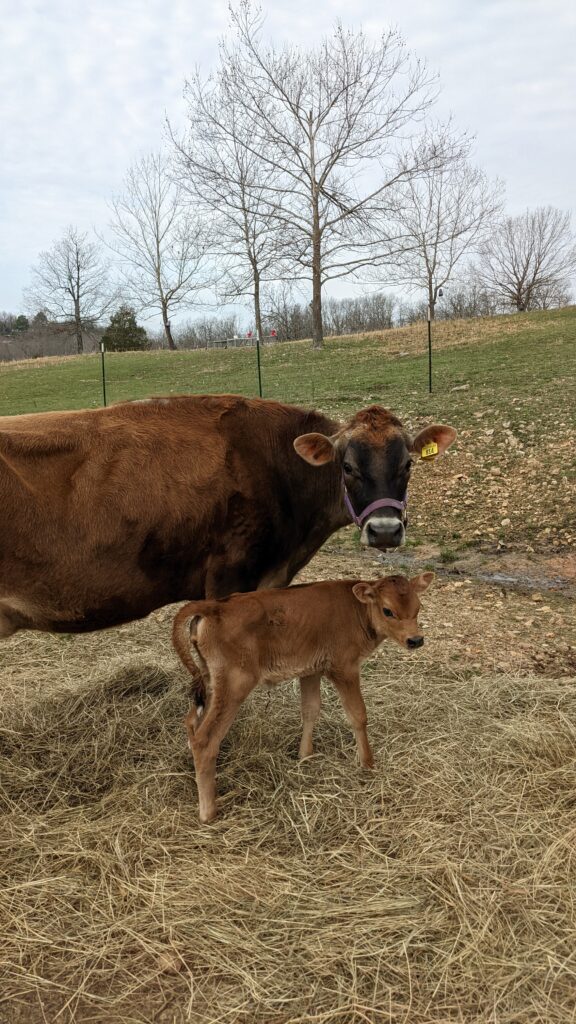
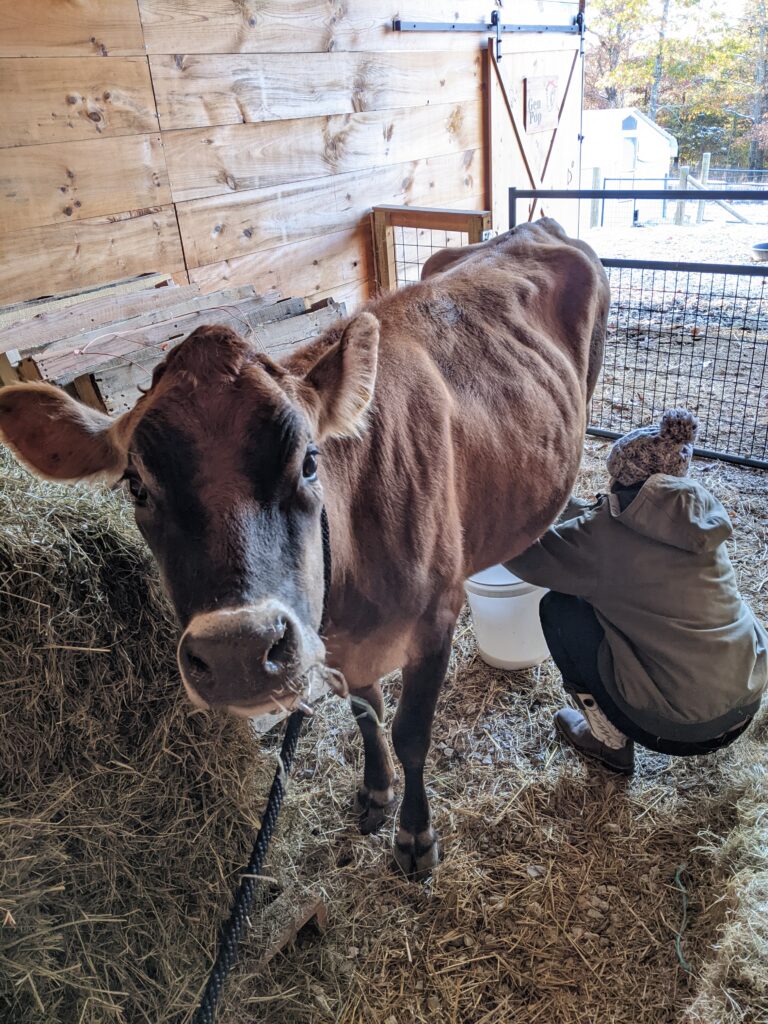
Disease Testing
Ask in any dairy group if your animal needs to be disease tested and you may start a war.
Just like everything else on this list, it’s about personal preference. Some people will say they keep a closed herd and don’t need to test, although if you have never tested that argument holds no water because it doesn’t mean that your animals are disease free. You’ll find others that compulsively test for no reason other than the addiction to it. We have a tendency to be somewhere in the middle.
We are firm believers in the body being able to heal itself and that’s no different with animals. The body needs the appropriate tools (vitamins, minerals, quality diet, clean living conditions) and it will typically heal itself. Things like parasite resistance through genetics and also holistic management are important.
To Vax or Not to Vax
Is it really a question?
We don’t always have the option to find our perfect cow. We have bought cattle in both groups. It’s not always a deal breaker when you are first starting because there are only so many options close to us and so much within our budget. I’ll leave you with the encouragement that you can absolutely find cows that haven’t received any injections you just have to be patient.
Conclusion
This isn’t an extensive list, but these are things that I wish I had found in post before we got our first cow.
Did you find it helpful?
What things would you add to this list?

